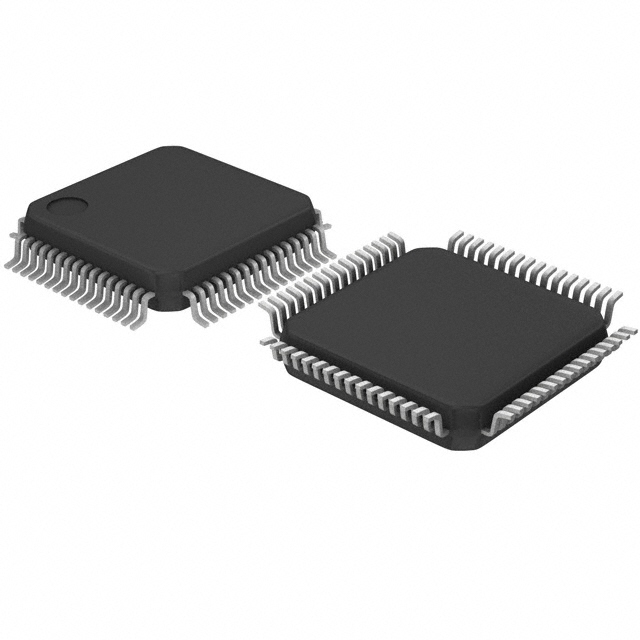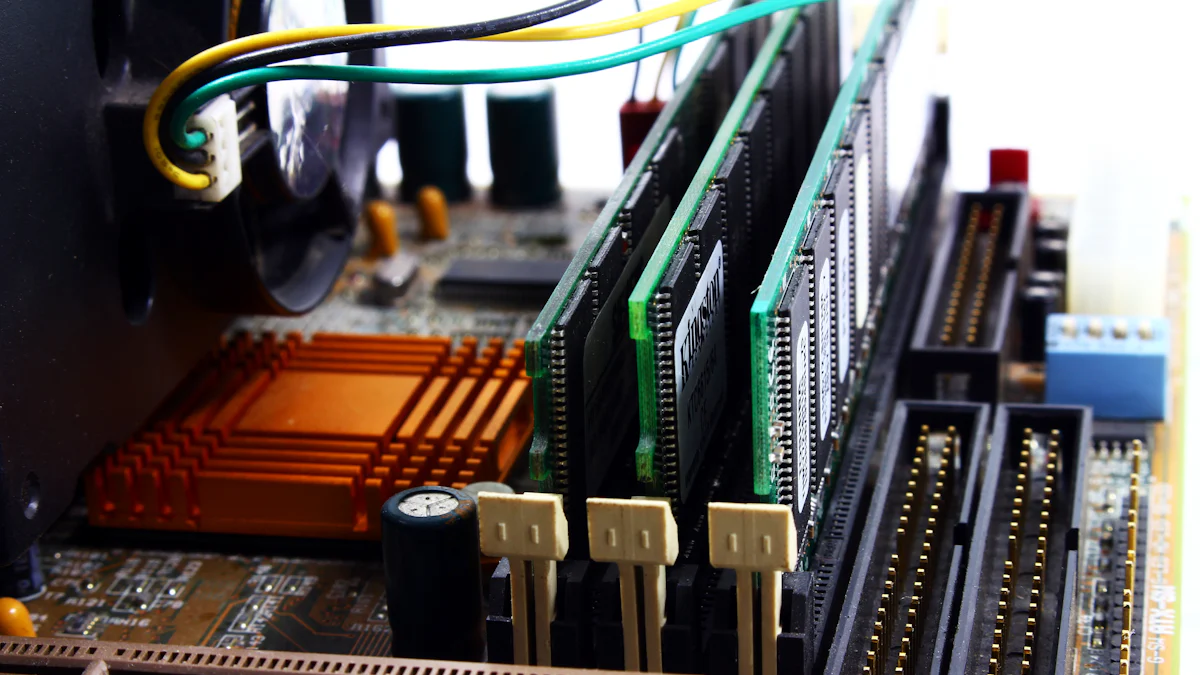How to Maximize Performance with the LPC2136FBD64 ARM Microcontroller

Maximizing performance with the LPC2136FBD64, NXP, ARM Microcontroller High Performance Embedded Chip is essential for achieving optimal outcomes in your projects. This microcontroller provides robust capabilities that can be harnessed through strategic approaches. Implementing efficient coding practices ensures that your programs operate smoothly and effectively. Power management is key to maintaining energy efficiency, preventing unnecessary power consumption. By leveraging built-in features, you can fully utilize the potential of the microcontroller. For more detailed specifications, please refer to this datasheet.
Understanding the LPC2136FBD64, NXP, ARM Microcontroller High Performance Embedded Chip

Key Specifications
When you explore the LPC2136FBD64, NXP, ARM Microcontroller High Performance Embedded Chip, you will find a range of impressive specifications that make it a powerful choice for embedded applications. This microcontroller features a 16/32-bit architecture, providing flexibility and efficiency in processing tasks. It operates at a maximum speed of 60 MHz, which ensures that your applications run smoothly and swiftly.
The LPC2136FBD64 includes up to 256 kB of embedded high-speed flash memory. This substantial storage capacity allows you to store extensive programs and data directly on the chip. Additionally, the microcontroller supports a 128-bit wide memory interface, facilitating efficient data handling and quick access to stored information.
Connectivity is another strong suit of this microcontroller. It offers multiple communication interfaces, including I2C, Microwire, SPI, SSI, SSP, and UART/USART. These options enable seamless interaction with other devices, making it versatile for various applications.
Performance Features
The performance features of the LPC2136FBD64, NXP, ARM Microcontroller High Performance Embedded Chip are designed to enhance your projects' efficiency and effectiveness. One of the standout features is its real-time debugging capability. The microcontroller incorporates EmbeddedICE RT and Embedded Trace interfaces, allowing you to trace instruction execution and debug your applications in real-time. This feature is invaluable for identifying and resolving issues quickly.
Moreover, the LPC2136FBD64 is part of the ARM7 family, known for its high performance in embedded systems. This lineage ensures that you benefit from a robust and reliable platform for your projects. The microcontroller's design also emphasizes user-friendliness, making it accessible even for beginners in embedded system development.
By understanding these key specifications and performance features, you can fully leverage the capabilities of the LPC2136FBD64, NXP, ARM Microcontroller High Performance Embedded Chip to maximize your project's performance.
Performance Optimization Techniques
Enhancing the performance of the LPC2136FBD64, NXP, ARM Microcontroller High Performance Embedded Chip requires a strategic approach. By focusing on efficient coding practices, power management, and memory utilization, you can significantly boost your project's efficiency.
Efficient Coding Practices
Using Efficient Algorithms
To maximize the potential of the LPC2136FBD64, NXP, ARM Microcontroller High Performance Embedded Chip, you should implement efficient algorithms. These algorithms streamline processes and reduce execution time. For instance, studies have shown that optimized implementations, such as the Simpira Permutation on microcontrollers, can improve performance by up to 5.7 times. By adopting similar strategies, you can enhance your microcontroller's efficiency.
Minimizing Resource Usage
Resource management is crucial for optimal performance. You should aim to minimize the use of CPU cycles and memory. This involves writing code that avoids unnecessary operations and leverages the microcontroller's capabilities. Efficient register scheduling, as demonstrated in various studies, can lead to faster performance and reduced resource consumption.
Power Management
Managing Power Consumption
Effective power management ensures that your microcontroller operates efficiently without draining energy. You should monitor power usage and implement strategies to reduce consumption. This might include using low-power modes or optimizing code to execute tasks more quickly, thereby conserving energy.
Preventing Overheating
Overheating can degrade performance and damage components. To prevent this, you should ensure adequate cooling and avoid excessive power draw. Implementing power-saving techniques can help maintain optimal operating temperatures, safeguarding the microcontroller's longevity.
Memory Utilization
Optimizing Memory Usage
Efficient memory usage is vital for the LPC2136FBD64, NXP, ARM Microcontroller High Performance Embedded Chip. You should optimize memory allocation and access patterns to prevent wastage. Techniques such as memory pooling and efficient data structures can help you achieve this goal.
Preventing Bottlenecks
Memory bottlenecks can hinder performance. To avoid them, you should ensure that data flows smoothly through the system. This involves optimizing data handling and minimizing latency. By addressing potential bottlenecks, you can maintain a high level of performance.
By implementing these performance optimization techniques, you can fully leverage the capabilities of the LPC2136FBD64, NXP, ARM Microcontroller High Performance Embedded Chip, ensuring your projects run efficiently and effectively.
Leveraging Built-in Features
To fully harness the potential of the LPC2136FBD64, NXP, ARM Microcontroller High Performance Embedded Chip, you should leverage its built-in features. These features can significantly enhance your project's efficiency and performance.
Utilizing Peripherals
Peripherals play a crucial role in maximizing the microcontroller's capabilities. By effectively utilizing them, you can offload tasks and improve overall efficiency.
Offloading Tasks
You can offload specific tasks to peripherals, freeing up the main processor for more critical operations. For instance, using the UART/USART interface for communication tasks allows the microcontroller to handle other processes simultaneously. This division of labor ensures that your system operates smoothly and efficiently.
Improving Efficiency
Peripherals can also improve efficiency by handling repetitive or time-consuming tasks. For example, the SPI interface can manage data transfers between devices, reducing the workload on the CPU. By delegating these tasks, you optimize the microcontroller's performance and enhance the system's responsiveness.
Interrupt Handling
Efficient interrupt handling is vital for maintaining the microcontroller's performance. Proper management of interrupts ensures that your system responds promptly to external events.
Importance of Efficient Handling
Efficient interrupt handling minimizes latency and maximizes system responsiveness. When an interrupt occurs, the microcontroller must quickly pause its current task, address the interrupt, and resume operations. This swift response is crucial for real-time applications where timing is critical.
Techniques for Optimization
To optimize interrupt handling, you should prioritize interrupts based on their importance. Assign higher priority to critical interrupts to ensure they receive immediate attention. Additionally, keep interrupt service routines (ISRs) short and efficient to minimize processing time. By implementing these techniques, you maintain high performance and reliability in your embedded systems.
By leveraging these built-in features, you can maximize the performance of the LPC2136FBD64, NXP, ARM Microcontroller High Performance Embedded Chip. Utilizing peripherals and optimizing interrupt handling are key strategies for enhancing your project's efficiency and effectiveness.
Debugging and Testing
Debugging and testing are crucial steps in ensuring that your LPC2136FBD64 ARM Microcontroller operates at its best. By implementing effective strategies, you can identify and resolve issues swiftly, leading to a more reliable and efficient system.
Strategies for Debugging
When debugging your microcontroller program, you should adopt a systematic approach. Here are some strategies to consider:
Use Real-Time Debugging Tools: The LPC2136FBD64 offers real-time debugging capabilities through its EmbeddedICE RT and Embedded Trace interfaces. These tools allow you to monitor instruction execution and identify issues as they occur.
Implement Breakpoints: Set breakpoints in your code to pause execution at critical points. This helps you examine the state of the system and understand where errors might be occurring.
Analyze Error Logs: Keep track of error logs generated by your system. These logs provide valuable insights into the nature of the problems and help you pinpoint their origins.
Conduct Step-by-Step Execution: Execute your program step-by-step to observe its behavior. This method allows you to detect anomalies and understand how different parts of the code interact.
Gunjan Bhavsar, an expert in microcontroller debugging, emphasizes the importance of a structured approach. "Techniques to debug a microcontroller program that crashes randomly involve careful observation and systematic testing," he notes.
Ensuring Peak Performance
To ensure that your microcontroller performs at its peak, you should focus on thorough testing. Here are some key practices:
Perform Stress Testing: Subject your system to extreme conditions to evaluate its stability and performance. This helps you identify potential weaknesses and areas for improvement.
Conduct Functional Testing: Verify that each function of your microcontroller operates as intended. This ensures that all components work together seamlessly.
Utilize Automated Testing Tools: Implement automated testing tools to streamline the testing process. These tools can quickly identify issues and reduce the time spent on manual testing.
Regularly Update Firmware: Keep your microcontroller's firmware up to date. Updates often include performance enhancements and bug fixes that can improve overall efficiency.
By applying these debugging and testing strategies, you can maintain the LPC2136FBD64 ARM Microcontroller's performance at its highest level. This ensures that your projects run smoothly and effectively, providing reliable results.
You have explored key strategies to maximize the performance of the LPC2136FBD64 ARM Microcontroller. Efficient coding practices, power management, and leveraging built-in features are essential for enhancing your embedded systems. By optimizing code, you reduce processor workload, leading to energy-efficient designs that prolong battery life and improve thermal management. Each strategy plays a crucial role in ensuring your projects run smoothly and effectively. Apply these insights to elevate your embedded systems, achieving reliable and high-performing outcomes.
See Also
Enhancing Embedded Systems Using STM32F405RGT6 Microcontroller
Integrating HD6477043F28 Microcontroller Into Your Projects
Exploring Essential Features of STM32F103C8T6 Microcontroller
Efficiently Driving Embedded Systems with MC68LC060RC50
Exploring STM8S003F3P6TR Microcontroller Uses in Embedded Systems

